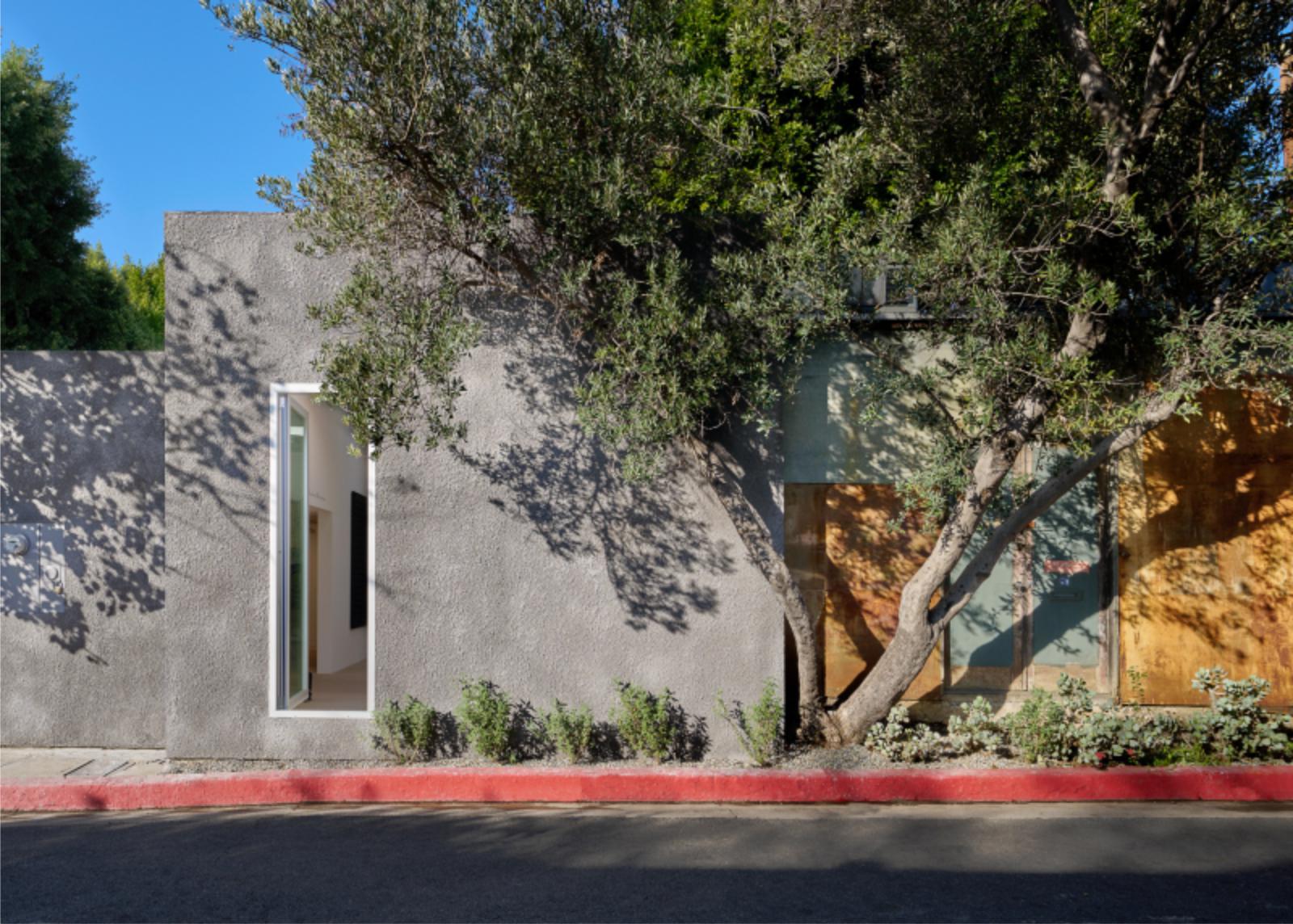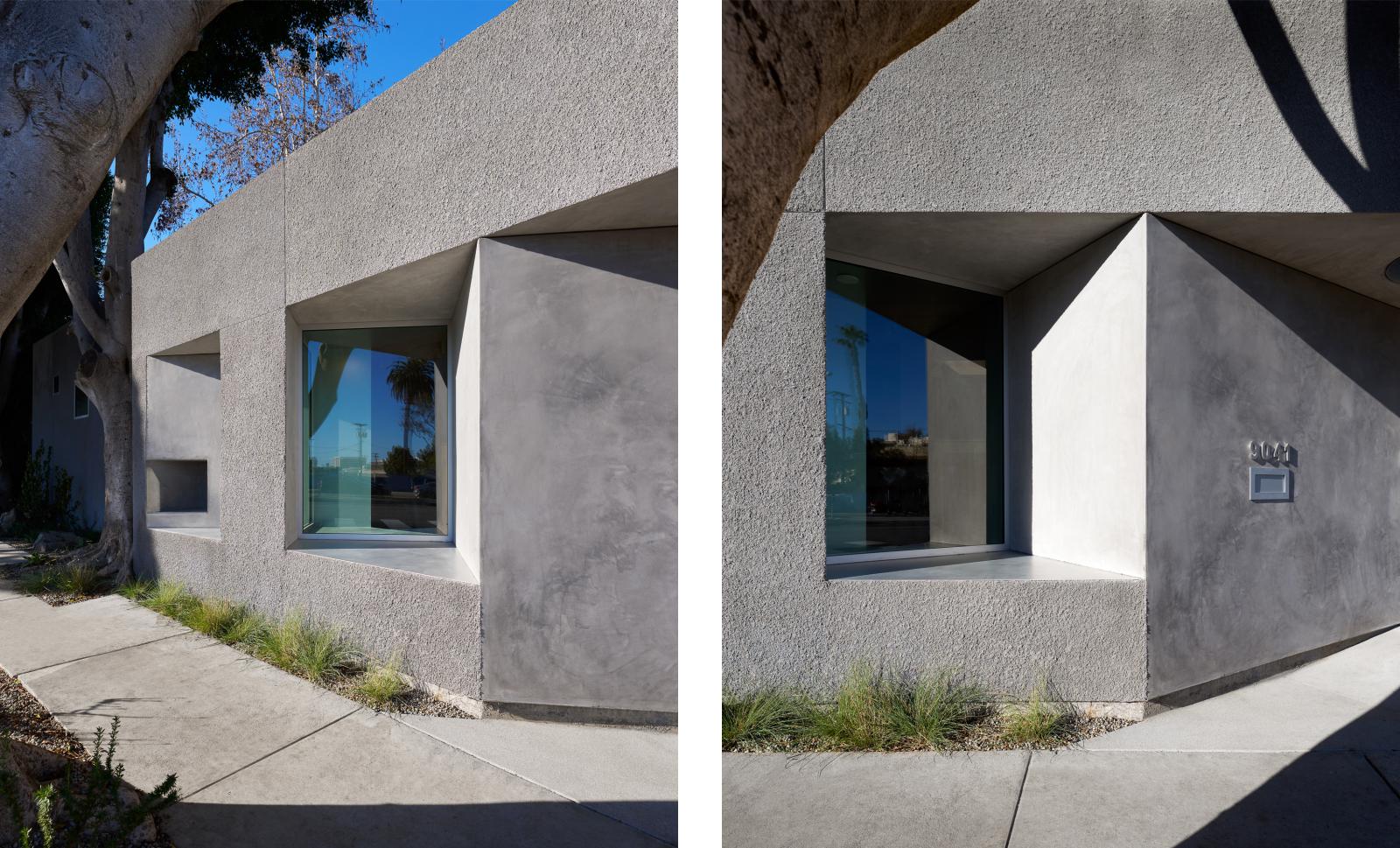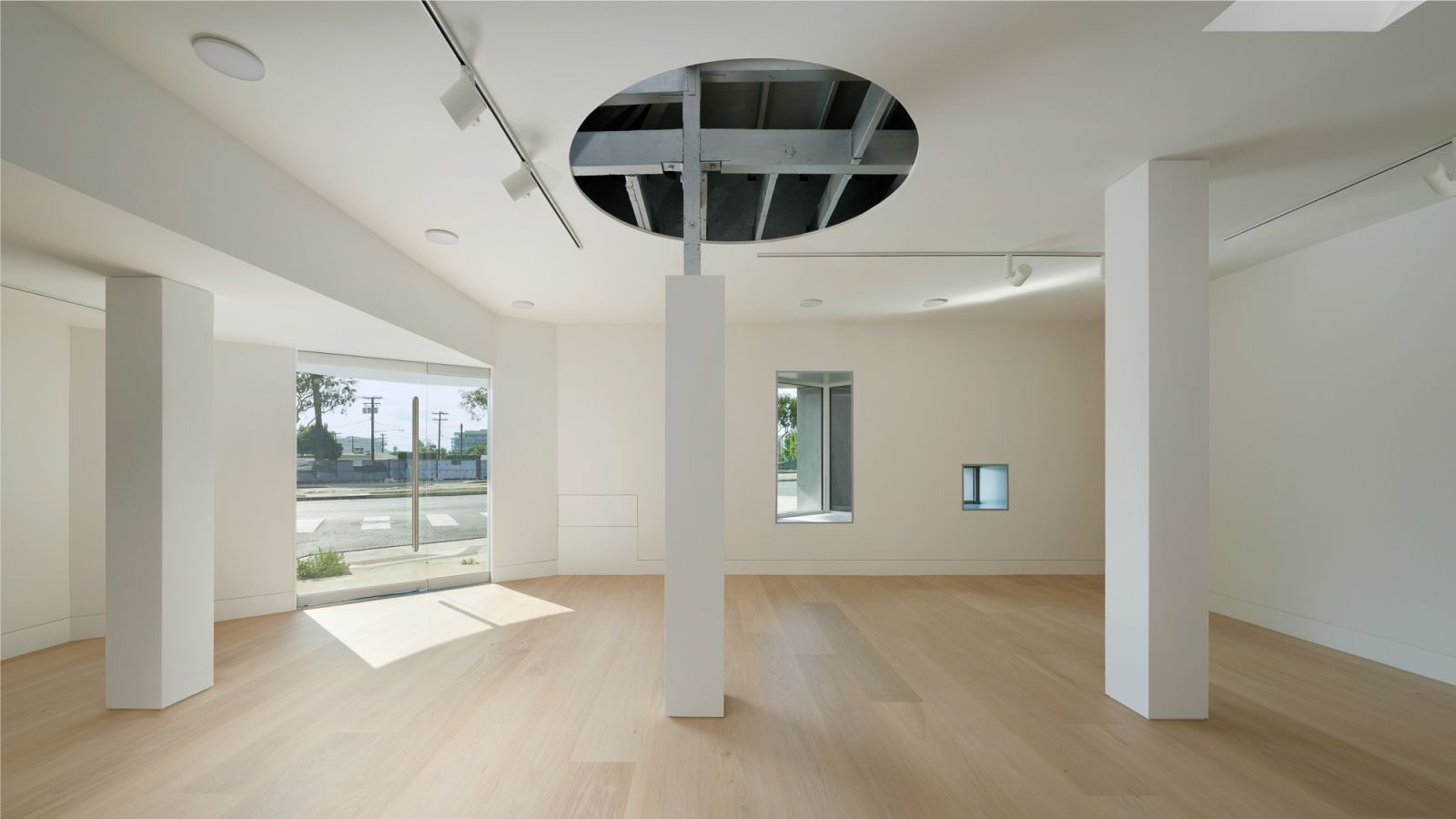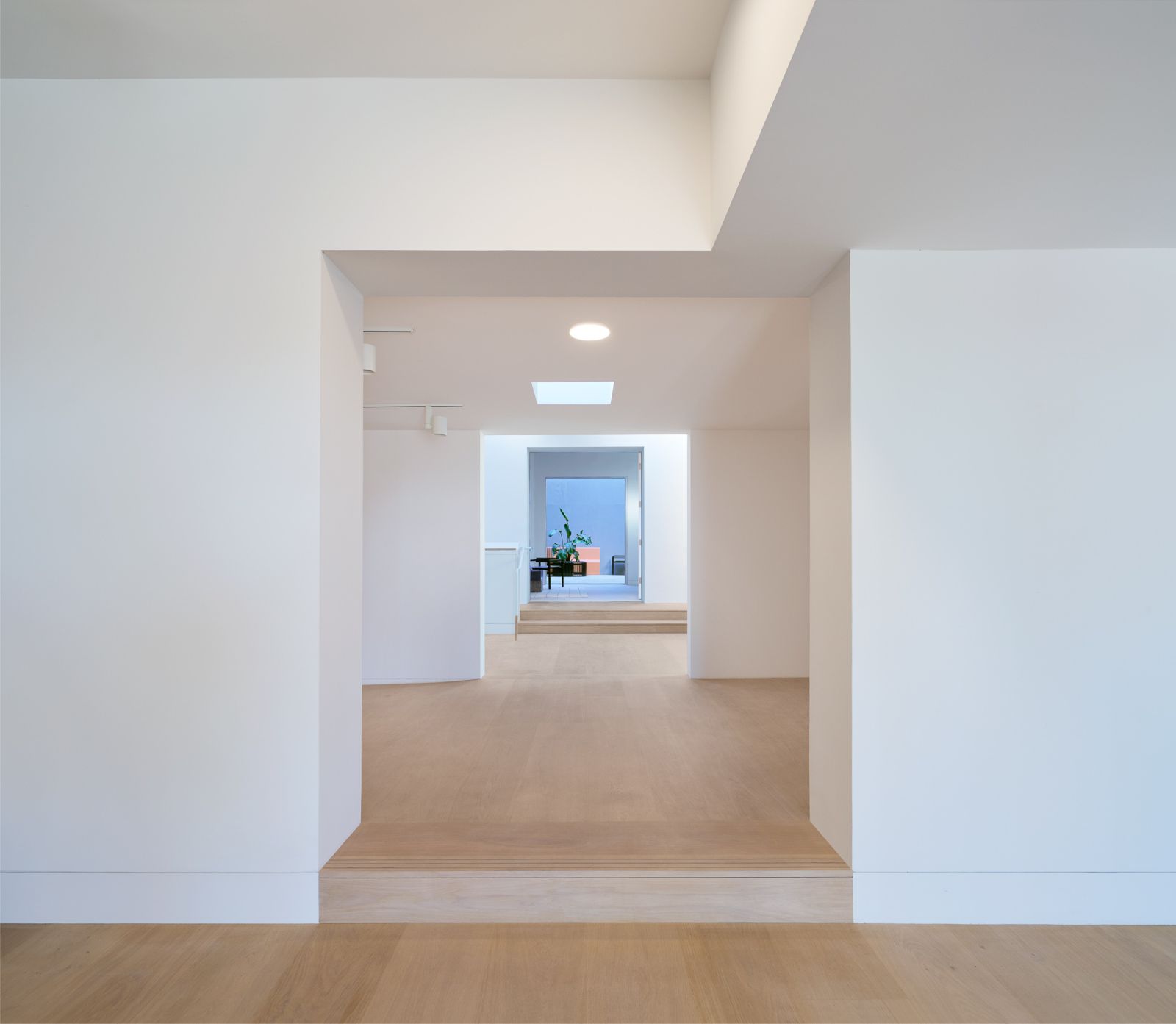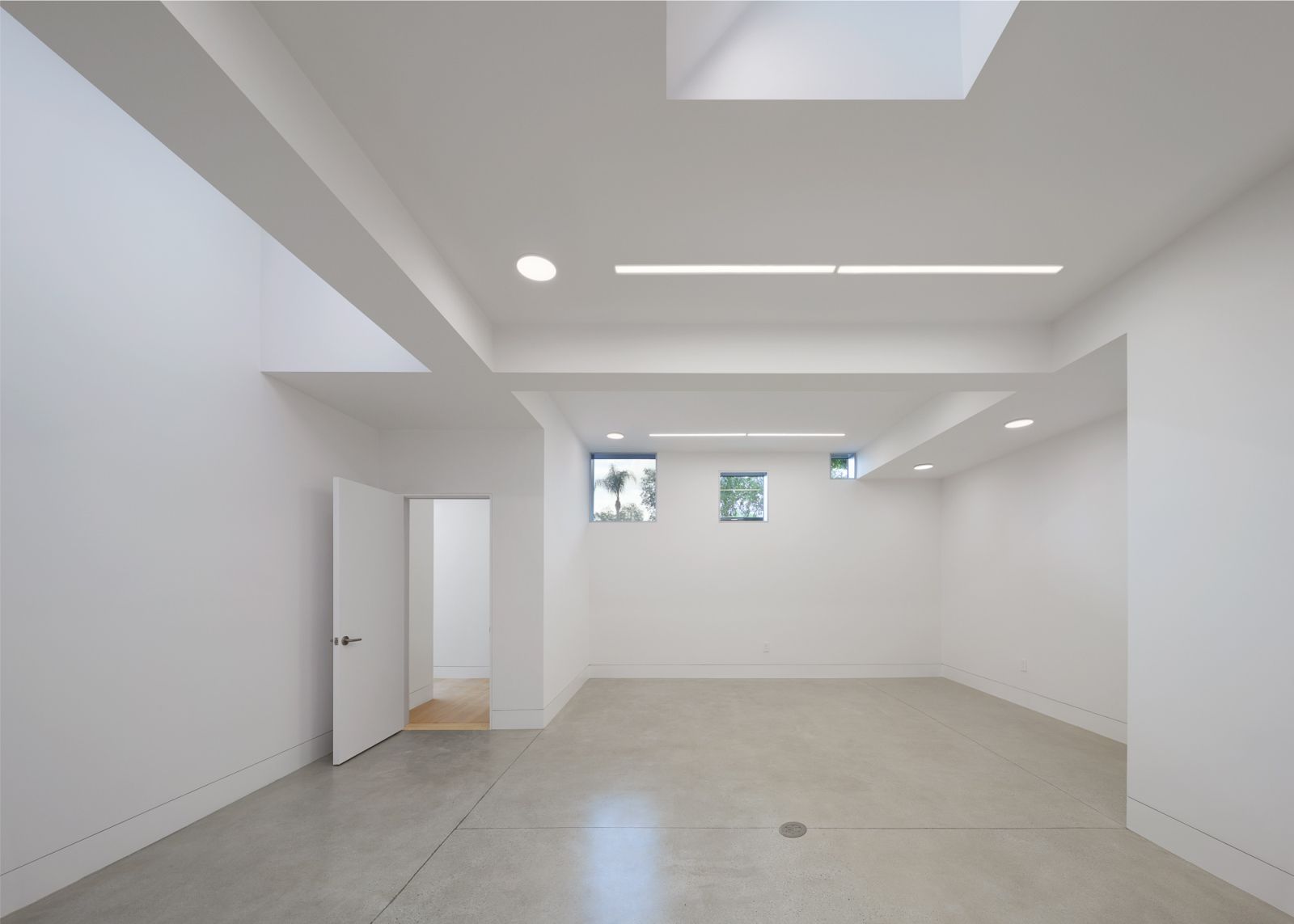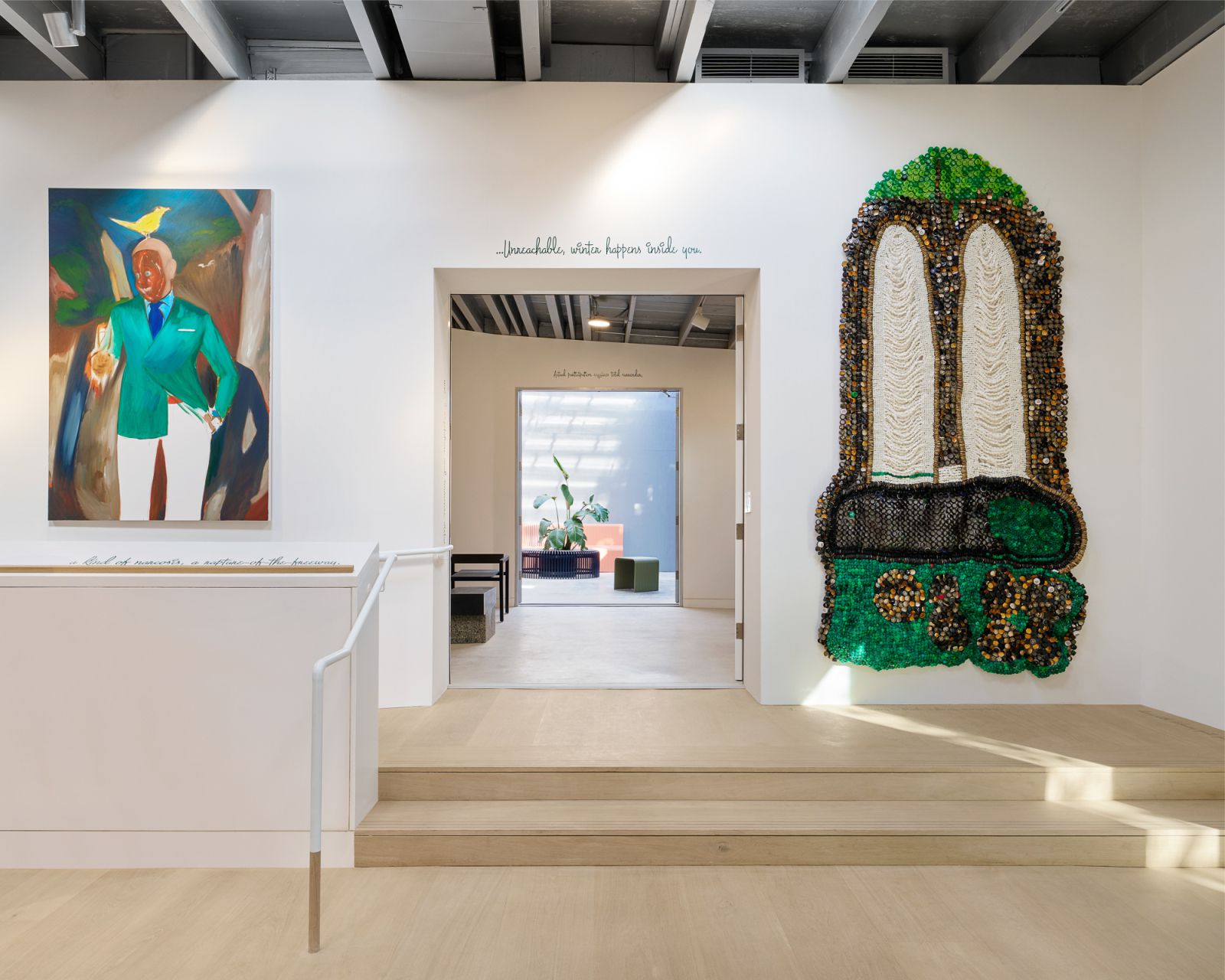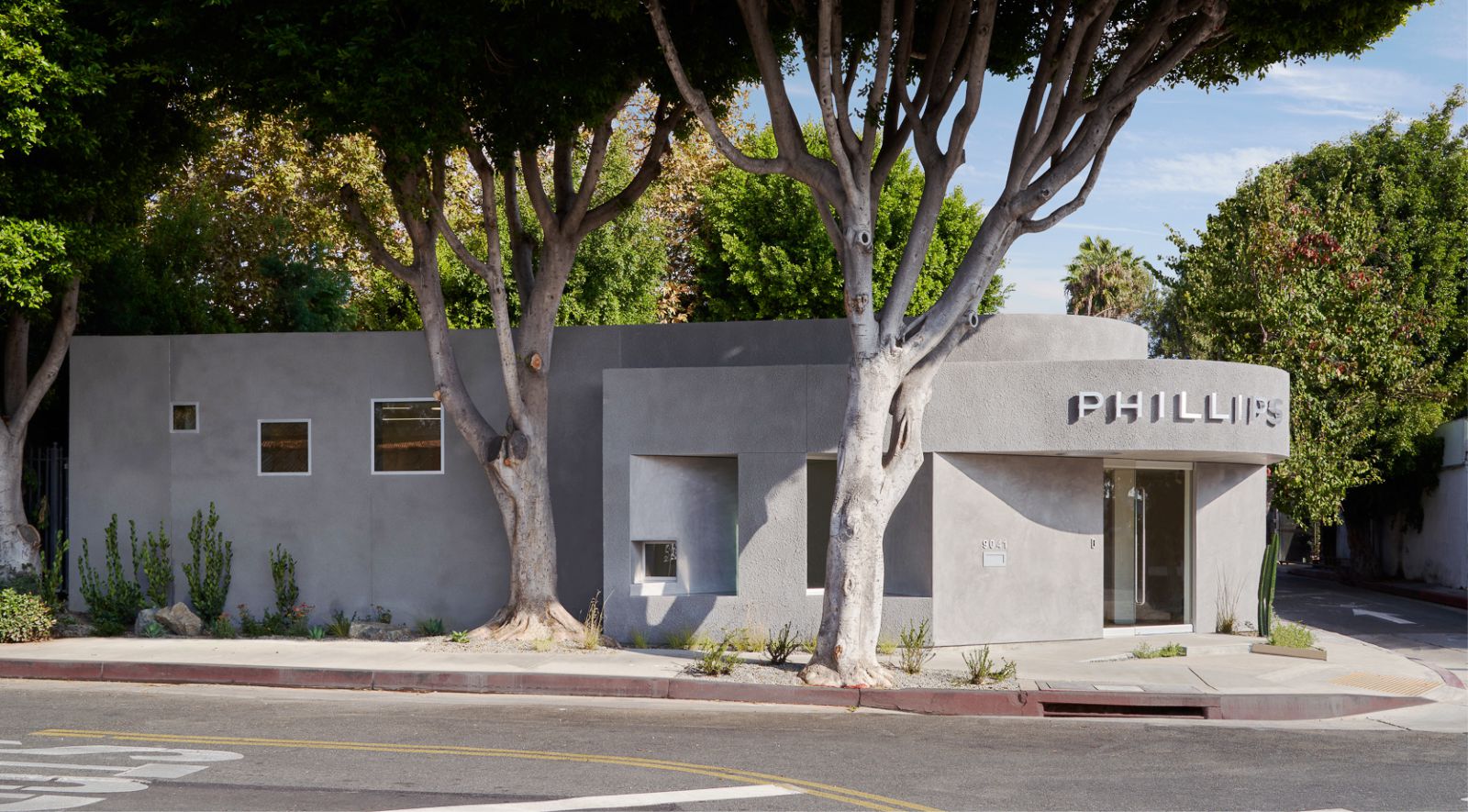Formation Association, led by John K. Chan, has designed the West Coast headquarters for Phillips, the London-based contemporary auction house. The space, which will open to the public in October, 2022, is remodeled from a series of existing buildings, featuring three showrooms, a patio, and offices, transforming what were once eclectic neighborhood structures into light-filled galleries.
At the street corner, the showroom entrance is set within a curved canopy, appearing at residential scale and nestled under the cover of ficuses. This rounded marquee, punctuated by an overhead oculus, evokes the automobile-oriented Streamline Moderne era.
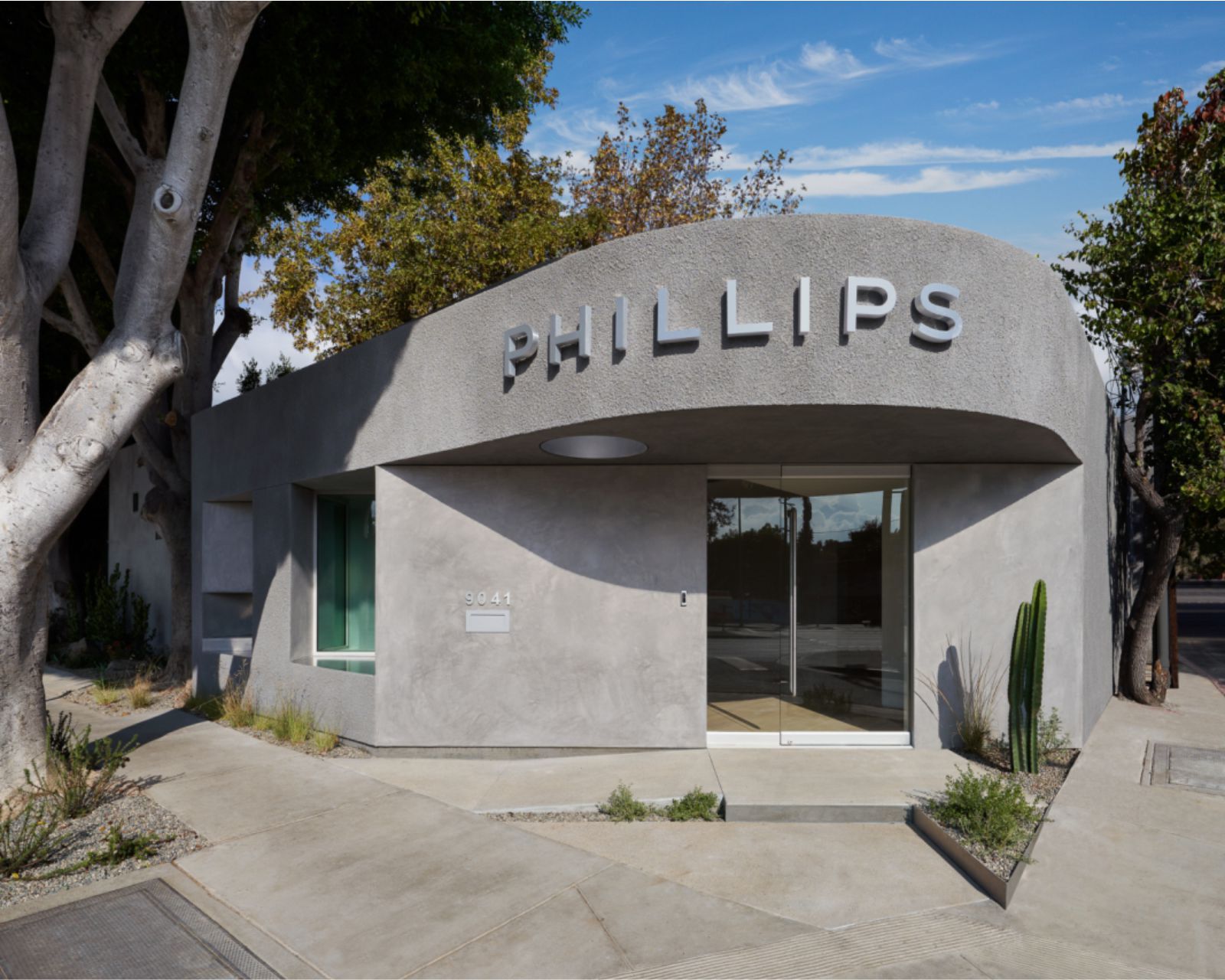
The gray, heavy dash stucco exterior is contrasted against a smooth trowelled plaster at volumetric transitions, conjuring the textures of workaday local building materials in a sculpted manner and lending a distinctly southern California identity to the architectural treatment.
On the east elevation, the architects have preserved the existing sheet metal siding and an old doorway still emblazoned with the address—703 Wiley— remaining artifacts of the previous building (likely originally a florist or outdoor market) juxtaposed with the spartan, gray exterior of the new improvements.

This historical facade appears between the stucco cladding of the entryway and the existing wood boards, stained gray, which clad a covered patio at the back of the building. The east exterior wall also features a narrow, 8’6” window through which Phillips may move large
artworks. Varied roof elevations further contribute to this eclectic assemblage of varied masses.
Along the south-facing front of the building, the architects have integrated deeply recessed windows, cut obliquely into the thickened perimeter wall, like medieval hagioscopes (openings in medieval ecclestatical structures through which visitors could peer through an elevation). This aesthetic strategy helped Chan simultaneously meet city requirements to introduce more glazing to the elevation and Phillips’s need to maximize gallery wall space for hanging artwork.

The oculus appears on the smooth, plaster underside of the marquee, creating an interplay of light and shadow echoed by the recessed windows. Inside the glass doors, the visitor enters Showroom A, the first of three galleries. A soffit ceiling creates an aura of intimacy at the entrance, while generous 7” baseboards generate a residential sensibility throughout the entire showroom.
Three square, drywall columns of varied sizes extend from floor to ceiling. The higher ceiling elevation in this showroom features a second oculus, allowing natural light to stream in and illuminate artwork. Exposed wood framing, painted silver as an homage to the southern California architect Richard Neutra, appears within the oculus. This “cut” into the building also references the sliced architectural sculptures of visual artist Gordon Matta-Clark.

Built into the wall facing the street, white wood panels give way to an operable mailbox, a quite literal link between the gallery and the rest of the neighborhood. From Showroom A, the viewer passes through an open entryway to Showroom B, the smallest of the three gallery spaces. Another open entryway links Showroom B to Showroom C, which features a silver-painted, exposed wood beam ceiling that links back to the painted oculus in Showroom A.
With a 15’-6” ceiling, Showroom C is the tallest exhibition space, most suitable for large paintings and sculptures. Oak floors extend across Showrooms A, B, and C, contributing to continuity and branding—Phillips uses this flooring throughout each of its international locations. At the back of the gallery, a bookshelf and reading nook beckon visitors to sit, read, and research.

A set of stairs and an ADA ramp rises to the very back of the building, where a set of double doors opens to a small office that will function as a client meeting room. This space leads to a generous outdoor patio. The 3/4 interior walls of the patio are stained plywood that matches the grey of the siding / stucco exterior, and the fourth wall separating the patio from the client meeting room will remain as a stucco finish (also grey).
The architects retained a skylight from the original building and inserted three picture windows of varied scale high on the wall that faces the street. The patio leads back onto the street, into West Hollywood commerce and the southern California foliage beyond. Source by Formation Association.
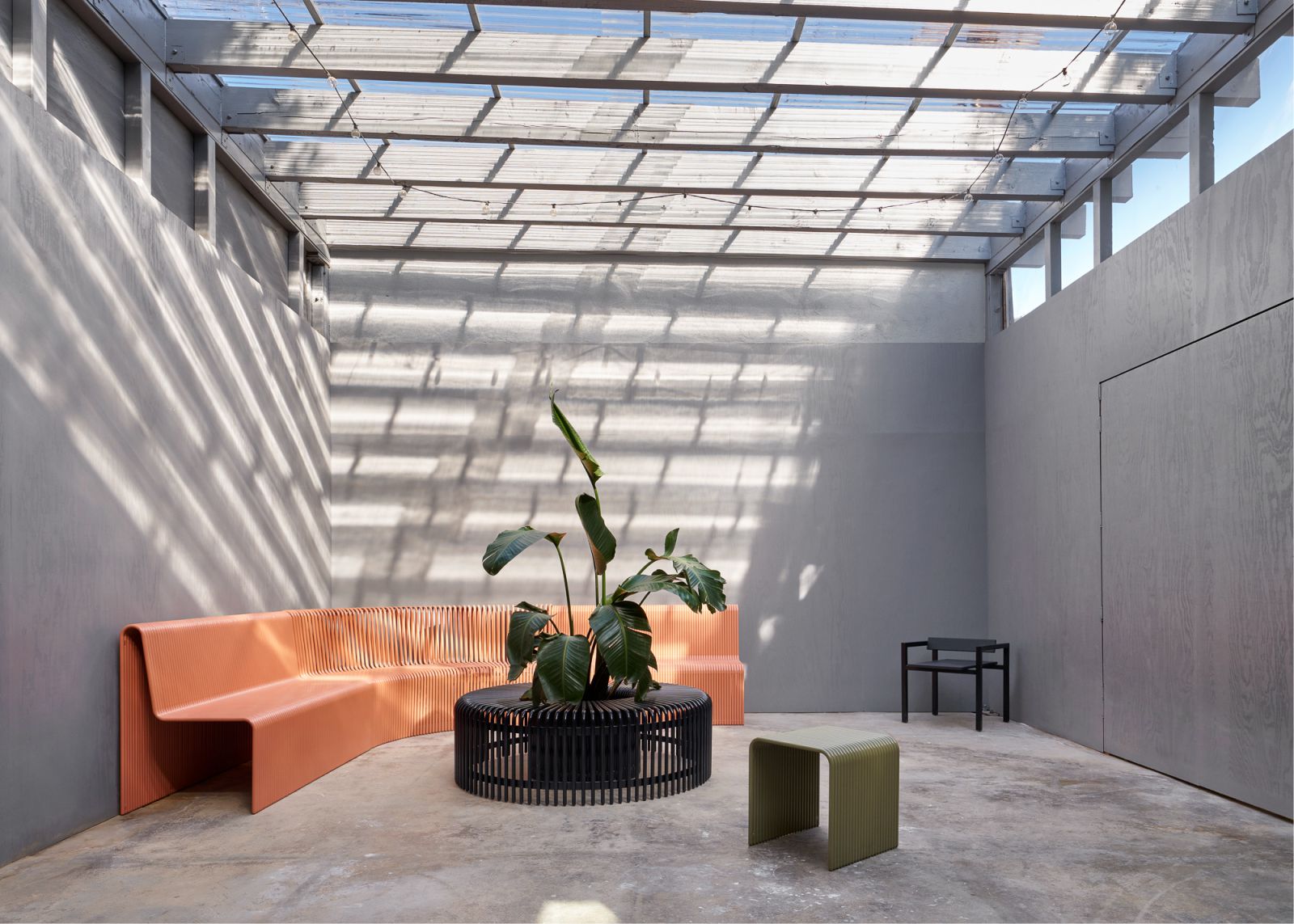
- Location: Santa Monica Boulevard, Los Angels, USA
- Architect: Formation Association
- Design Team: John K Chan, Nick Miuccio, Carlo ‘CJ’ Guzman, Jay Lee, Colin Jacobs
- Structural Engineer: Nous Engineering
- MEP Engineer: Engineous Group
- Lighting Designer: Fisher Marantz Stone
- Landscape Designer: Ochre
- Wood Floor: Dinesen
- Storefront: CR Laurence
- Service Window: La Cantina
- Track Lighting: Cooper Lighting Solutions, WAC Lighting
- Down Lighting: DMF
- Paint: Dunn-Edwards, Modern Masters
- Square footage: 3,182 sf
- Year: 2022
- Photographs: Eric Staudenmaier, Courtesy of Formation Association
